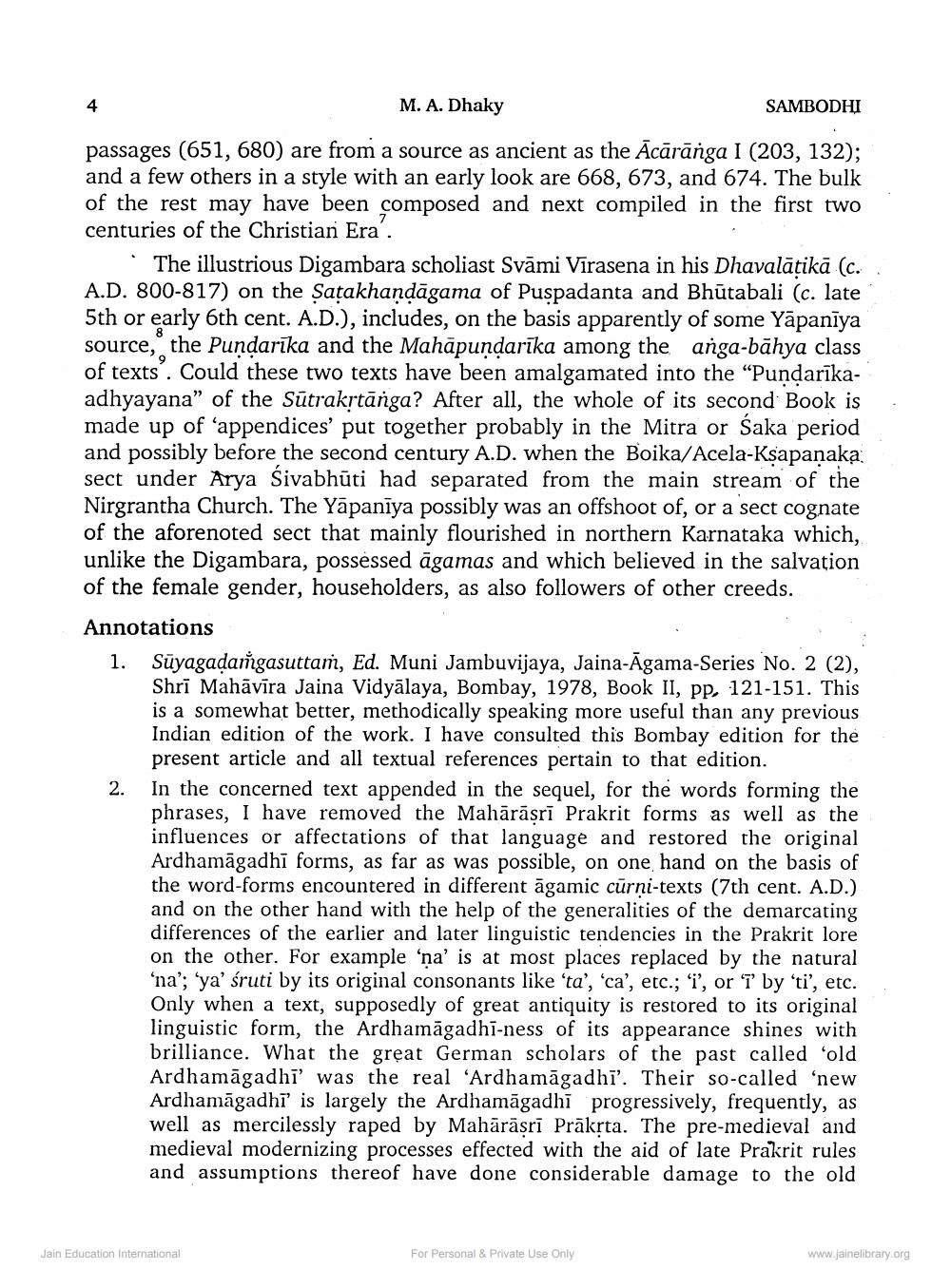________________
M. A. Dhaky
SAMBODHI
passages (651, 680) are from a source as ancient as the Acārānga I (203, 132); and a few others in a style with an early look are 668, 673, and 674. The bulk of the rest may have been composed and next compiled in the first two centuries of the Christian Era'.
. The illustrious Digambara scholiast Svāmi Virasena in his Dhavalātikā (c. A.D. 800-817) on the Satakhandāgama of Puspadanta and Bhūtabali (c. late 5th or early 6th cent. A.D.), includes, on the basis apparently of some Yāpanīya source, the Pundarīka and the Mahāpuņdarīka among the anga-bāhya class of texts . Could these two texts have been amalgamated into the "Pundarīkaadhyayana” of the Sūtrakrtānga? After all, the whole of its second Book is made up of 'appendices' put together probably in the Mitra or Saka period and possibly before the second century A.D. when the Boika/Acela-Ksapanaka sect under Arya Sivabhūti had separated from the main stream of the Nirgrantha Church. The Yapaniya possibly was an offshoot of, or a sect cognate of the aforenoted sect that mainly flourished in northern Karnataka which, unlike the Digambara, possessed āgamas and which believed in the salvation of the female gender, householders, as also followers of other creeds. Annotations 1. Sūyagadarigasuttam, Ed. Muni Jambuvijaya, Jaina-Agama-Series No. 2 (2),
Shri Mahāvīra Jaina Vidyālaya, Bombay, 1978, Book II, pp, 121-151. This is a somewhat better, methodically speaking more useful than any previous Indian edition of the work. I have consulted this Bombay edition for the
present article and all textual references pertain to that edition. 2. In the concerned text appended in the sequel, for the words forming the
phrases, I have removed the Mahārāșrī Prakrit forms as well as the influences or affectations of that language and restored the original Ardhamāgadhī forms, as far as was possible, on one hand on the basis of the word-forms encountered in different āgamic cūrni-texts (7th cent. A.D.) and on the other hand with the help of the generalities of the demarcating differences of the earlier and later linguistic tendencies in the Prakrit lore on the other. For example 'na' is at most places replaced by the natural 'na'; 'ya' śruti by its original consonants like 'ta', 'ca', etc.; 'i', or 'T' by 'ti', etc. Only when a text, supposedly of great antiquity is restored to its original linguistic form, the Ardhamāgadhi-ness of its appearance shines with brilliance. What the great German scholars of the past called 'old Ardhamāgadhi' was the real 'Ardhamāgadhi'. Their so-called 'new Ardhamāgadhi' is largely the Ardhamāgadhi progressively, frequently, as well as mercilessly raped by Mahārāsri Prākrta. The pre-medieval and medieval modernizing processes effected with the aid of late Prakrit rules and assumptions thereof have done considerable damage to the old
, replaced
ny of grear ke tay
Jain Education International
For Personal & Private Use Only
www.jainelibrary.org




